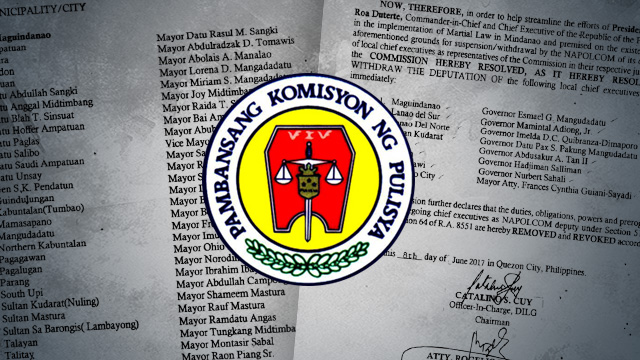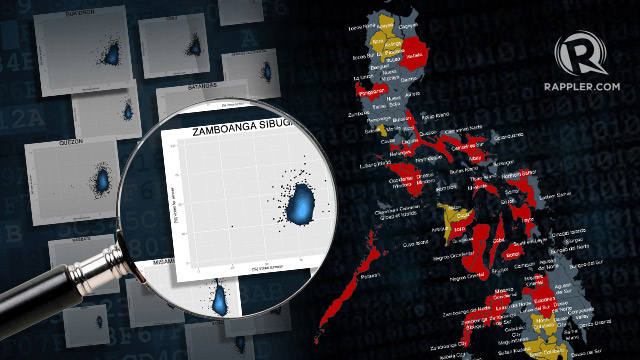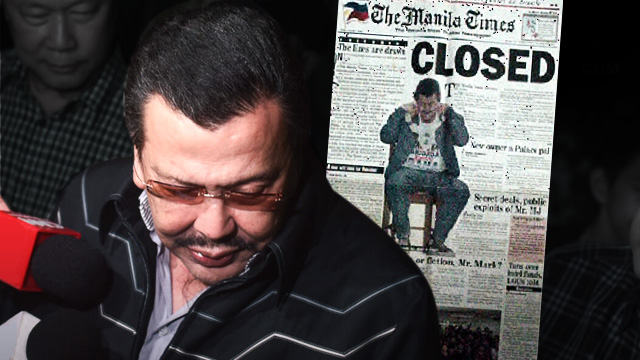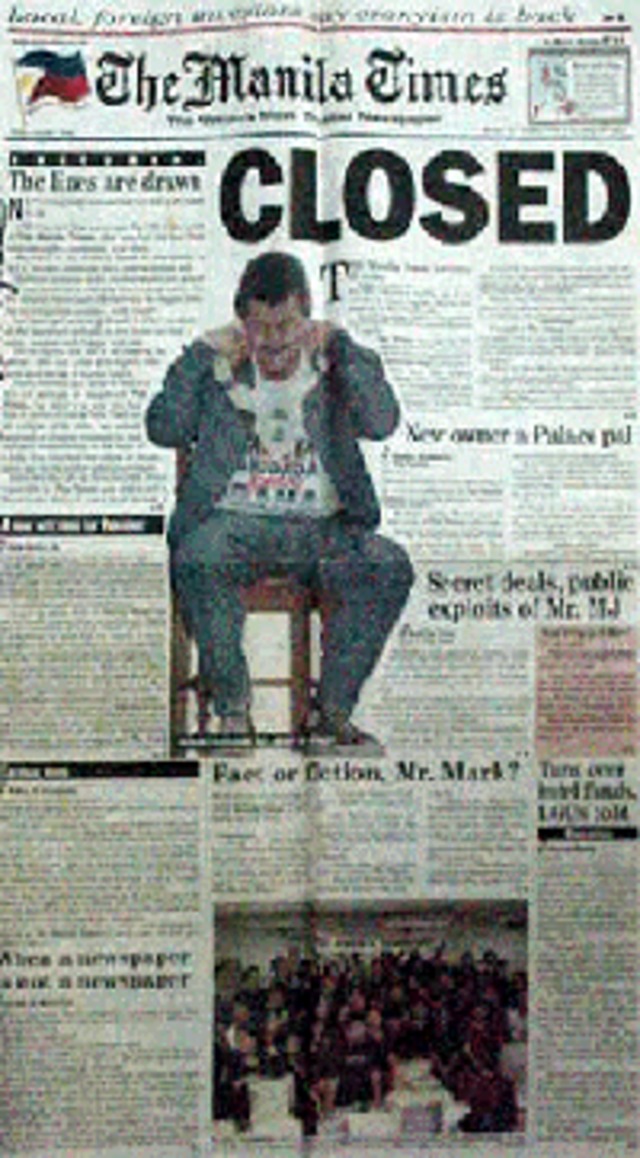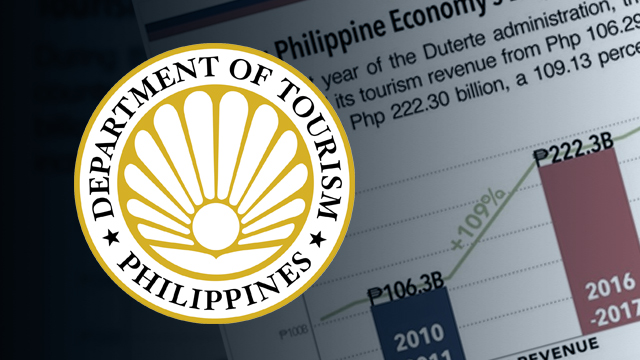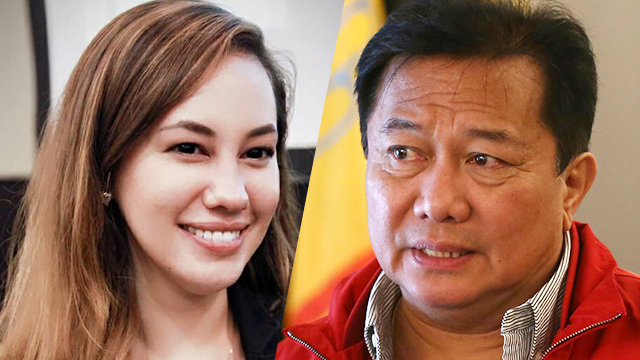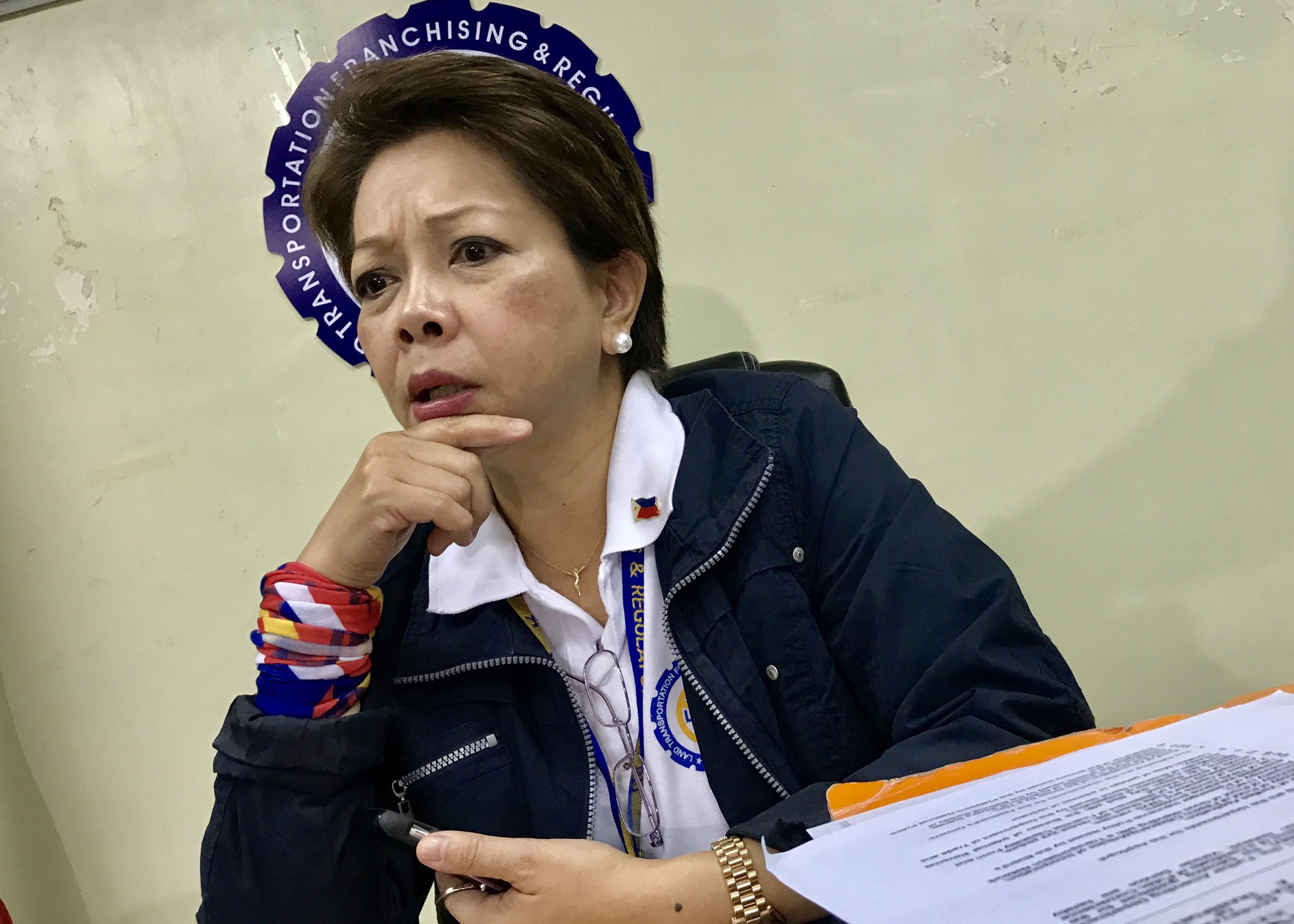![IN HIS ELEMENT. As House Majority Leader, Rodolfo Fariñas has delivered the votes needed to pass the President's priority bills. Photo by LeAnne Jazul/Rappler]()
MANILA, Philippines – In the House of Representatives, one fact is indisputable: Rodolfo "Rudy" Fariñas runs the show.
It is what's expected of a majority leader in the chamber, to be sure. But lawmakers say he's more than that – as Fariñas lectures them on rules, mobilizes them for a vote, punishes them when they're late, and, in the middle of a verbal brawl, gives the last word.
In the last 12 months, he has shown the Duterte administration that the gamble on the ex-Liberal Party (LP) member is paying off.
Fariñas' current post puts the Ilocos Norte 1st District representative at the center of political and media attention – whether he likes it or not. His interview with Rappler was held at a 5-star hotel overlooking Manila Bay. Drinks were overflowing, but Fariñas said he preferred to be home. If it weren’t for Speaker Pantaleon Alvarez, who hosted that evening’s cocktails, he said would have gone back to Laoag City to be with his grandchildren instead.
“Katulad nito, as majority leader, nagkakaroon ako ng mga obligations na I would rather not have. Sinasama ako ni Speaker sa mga travel sa abroad. May mga AIPA and everything. One dinner lang ako then ‘yung iba, ayoko na sumama,” said Fariñas. (Like this one, as majority leader, I have obligations I would rather not have. Speaker would bring me along on travels abroad, including AIPA. One dinner is enough for me, the rest, I no longer want to join.)
He was sipping his glass of whiskey in between replying to various Viber threads he created with other lawmakers. Across the hall, legislators from the ASEAN Inter-parliamentary Assembly were enjoying the night after two days of discussing how to fight the drug menace.
Days of booze and parties
In some ways, this is not the Fariñas of the 1970s and '80s, the partying Atenean who somehow still aced his classes and even landed in the top 8 of the 1978 Bar exams.
He's had a fast rise in politics as mayor and governor, but he also sufferred successive losses in his family and political life. One after the other, Fariñas lost his father, his older brother, his seat in Congress, and his wife Maria Teresa Carlson, who jumped to her death from her apartment in San Juan, Greenhills.
In 2015, Fariñas also lost his 20-year-old son and namesake Rodolfo “JR” Fariñas Jr, who died in a motorcycle accident in Ilocos Norte.
The 65-year-old lawmaker has bounced back. These days, he is holding the second highest position in the House, busy coming up with votes for the controversial pet bills of President Rodrigo Duterte.
“I am a worker, but a politician, no,” Fariñas insisted.
He's both, as his track record shows.
He was instrumental in the impeachment of Merceditas Gutierrez as Ombudsman in 2011 and the late Renato Corona as chief justice in 2012, fighting the political wars of then president Benigno Aquino III for which he earned Aquino's respect.
Recently, Fariñas' political muscle managed to bring his squabble with Ilocos Norte Governor Imee Marcos into the national spotlight through a congressional probe into her alleged misuse of tobacco funds.
The last word
Fariñas has been known to give room for discussions in the House, but once he speaks, it's almost always the last word.
His presence in committee meetings is a signal to House reporters that a bill will likely be approved that day. The lawyer-turned-lawmaker easily turns legal jargon into catchy soundbites, often winning arguments on the floor no matter how hard those opposing him try. (READ: When the House whips go to work for the death penalty)
When the controversial death penalty bill was up for 2nd reading in February this year, several opposition lawmakers tried to use the quorum rule to delay the process. But when a heated exchange between Albay 1st District Representative Edcel Lagman of the opposition and Deputy Speaker Raneo Abu seemed to be go nowhere, Fariñas stepped in.
"Because they want to speak, we are accommodating them to speak. But when they speak, they demand that at least 51% should be present here to speak. Eh 'di na namin problema 'yun kung walang gustong makinig sa inyo (It's not our problem anymore if no one wants to listen to you)," said Fariñas, his colleagues at rapt attention on him.
"I will now lay on the floor that we will meet in the committee on rules… and I will call for the caucus of the majority. And if the majority says, 'Enough debates already. Let us vote on the matter,' eh maski gusto ko po kayong pagbigyan, kung ayaw na ng nakakarami, eh baka mapilitan po kaming itigil na ang debate dito at pagbotohan (even if I want to accommodate you, if the majority doesn't want to, then we may be forced to stop the debate and just vote on the bill)," he said.
Less than a month later, the House passed the death penalty bill on 3rd and final reading.
{source}
<div class="blob-full" style="position:relative;">
<bg-image-no-crop style="background: url('http://assets.rappler.com/E87AC84DF9D64E109B8CFEE3533C4CAD/img/77A07855DA334D4EAA1B51E1887F275E/congress-death-penalty-bill-final-reading-march-7-2017-006.jpg');">
</bg-image-no-crop>
<text-container class="top light half right" style="font-size:14px;">
Fariñas gestures as lawmakers passed the controversial death penalty bill on March 7. Photo by Ben Nabong/Rappler
</text-container>
</div>
{/source}
Fariñas also manages to put a sense of order and legality in committee hearings often criticized for the presence of grandstanding lawmakers who need a crash course in lawmaking.
When the House was assessing Magdalo Representative Gary Alejano's impeachment complaint against Duterte, Fariñas used Alejano's own verification of the document to rip his accusations apart.
Fariñas argued that Alejano's "lack of personal knowledge" made his allegations against the President "baseless." In under 4 hours, the justice committee junked the impeachment bid.
Most of the hours of the 3-day congressional probe into the deadly Resorts World attack also featured a Fariñas almost tireless in interpellating hotel management and law enforcement officials.
He and Alvarez were given unlimited time to grill the resource persons, but it was only Fariñas who was seen throwing questions from morning until the early evening.
Stickler for rules
Despite his strong personality, legislators said Fariñas has not resorted to threats in dealing with colleagues who disagreed with administration bills.
Instead, Akbayan Representative Tom Villarin of the opposition bloc said Fariñas often stresses his point “laced with ‘pakiusap (request)' but firm.”
“He is confrontational but not unreasonable. He always goes for winning an argument,” said Villarin.
A stickler for rules, Fariñas is called “Manong Rudy” in the House, a sign of respect for the veteran.
Fariñas has been implementing a strict attendance policy during the Tuesday meetings of the committee on rules, of which he is chairperson.
Deputy Majority Leader Juan Pablo Bondoc said any lawmaker who comes in late is barred from entering the meeting, even if he or she is just a minute late. The House leadership plans to implement a similar policy during plenary sessions starting July 25.
“I like working under him. He's very stimulating and it's very productive. The hours that you put in are rewarded with output… For one, he's a workaholic. So if you're interested putting in long hours and seeing results, matutuwa ka (you’ll be satisfied),” said Bondoc, who has worked with Fariñas with the committee on rules for 16 years.
Bondoc said Fariñas “sees himself as a mentor” who shares information with lawmakers, but who will not think twice in correcting their mistakes. The Pampanga 4th District representative likens hanging around with Fariñas to “taking a masters degree in public administration.”
Bondoc said Fariñas holds the trust of most members of the House, where at least 267 out of 291 lawmakers are allied with the majority.
“[It’s] bordering on blind faith…. In the world of politics, there's this expression that Camelot exists – that for a brief shining moment, you can have an institution that you can really believe in. Camelot exists under our Speaker, under Cong Rudy, because wala pang nakapagpabago nang mabilis [tulad nila] (no one has introduced change as fast as they have),” said Bondoc.
Working with Alvarez
So how does a strong personality avoid clashing with the Speaker of the House?
It was Alvarez himself who had offered the House majority leadership to Fariñas. Alvarez knew very well how Fariñas can deliver on the floor, having worked with him for the first time in the 11th Congress in 1998 to 2001.
Fariñas said Alvarez, whom he calls by his nickname Bebot, was already calling him "right after the electon of May 9" to offer him the job.
"Alvarez uses Fariñas to get things in order," said a source close to the two.
Villarin said Alvarez's "choice of a veteran" in Fariñas has helped the Speaker "reap dividends" in the lower chamber as well.
"Cong Rudy is a veteran House member while the Speaker is just a neophyte member. Cong Rudy knows many of the lawmakers and thus can relate closely with many of them," said Villarin.
{source}
<div class="blob-full" style="position:relative;">
<bg-image-no-crop style="background: url('http://assets.rappler.com/612F469A6EA84F6BAE882D2B94A4B421/img/44E19D90B8614AF09E0E9420C76BF2C6/farinas-alvarez-20161003_3ab31652de754487b97e1ad1182f754d.jpg');">
</bg-image-no-crop>
<text-container class="bottom light half right" style="font-size:14px;">
Alvarez and Fariñas have found a "system of mutual respect" that allows them to run the House with no conflicts at all. Photo by Mara Cepeda/Rappler
</text-container>
</div>
{/source}
Prior to being elected in the House in 2016, Alvarez' last stint in government was as transportation secretary from 2001 to 2002. Fariñas, on the other hand, is already on his 3rd term as lawmaker.
Known or derided for their machismo, Alvarez and Fariñas have worked out a "system of mutual respect" as they lead the charge in the lower chamber.
"They are a very effective tandem because the policies are set by the Speaker and carried out by the majority leader. And since both are skilled, the transition is seamless. There's no ego involved," said Bondoc.
"Walang pag-aawayan eh. Tsaka parehong 'di natatakot," he added. (They have nothing to fight about. They're both fearless.)
The doting 'Dang Dang'
Trust is a crucial thing for Fariñas, who describes himself as “independent-minded". This is why he would always get one of his 8 children – two from a longtime girlfriend from the 1980s and 6 with Carlson – as his chief of staff in Congress.
“Mula nung nasa Congress ako, I make one of my children my chief of staff dahil alam nila ‘yung style ko. Nabibilinan ko sila and everything. Nakakatulong din sila para nandun ‘yung complete trust and confidence, and then parang natutulungan nila ako talaga,” said Fariñas.
(Ever since I joined Congress, I make one of my children my chief of staff because they know my style. I can tell them what to do. They are able to help me, with my complete trust and confidence.)
He said other people have had trouble working with him, except his kids.
“Otherwise, nahirapan ‘yung iba sa akin eh. Nahirapan dahil masipag ako, slave driver ako,” he said. (Otherwise, people find it difficult to work with me. They have a hard time because I work hard, I am a slave driver.)
Despite his political prowess, Fariñas is protective of his children and has a soft spot for his grandchildren.
Since JR’s death in 2015, Fariñas has attended more than 427 Masses for his son, most of which were held near the spot along the highway in Bacarra where the accident happened.
“Every Saturday night, I sleep in the treehouse. I built a treehouse next to where my son died. When he died, I saw his dream treehouse on his phone, so I built it on a tree next to where he fell down. That’s where I sleep, then at 5:30 in the morning, we hold the Mass,” said Fariñas.
![A FATHER'S PROMISE. Fariñas speaks during a Mass held in memory of JR on June 11. Behind Fariñas is the treehouse he made in honor of his late son. Photo courtesy of Fariñas]()
He also attends 3 Masses every day for JR at the church near Fariñas’ Mandaluyong condominium. He said it’s convenient that the church holds Masses that last just for 30 minutes early in the morning.
Mondays to Thursdays are for legislative work, but Fariñas reserves Fridays to Sundays for family.
He would spend the weekend bonding with his grandchildren, bringing them to picnics and camping trips. He said they call him "Dang Dang."
But now that Fariñas is majority leader, family time has to be sacrificed. “Nagkagulo-gulo schedule ko – ‘yung kay JR, ‘yung Misa ko, ‘yung exercise, and everything. Hands-on kasi ako eh (My schedule is now messed up – for the Masses for JR, my exercise, and everything. It's because I’m a hands-on person). I'm the earliest to go to the House, I'm the latest to go. I attend committee meetings. Lahat mino-monitor ko. So nadi-disrupt 'yung private life ko (I monitor everything. So my personal life is disrupted),” said Fariñas.
“Gusto ko nga laid back lang ako eh. Majority Leader nga, pero kung palitan nila ako, thank you lang sa akin 'yan eh,” he said. (I just want to be laid back. I am the Majority Leader, but if they replace me, that would just be gratitude on my part.)
Falling out with Marcoses
{source}
<div class="blob-full" style="position:relative;">
<bg-image-no-crop style="background: url('http://assets.rappler.com/BBD2D4F41C6F46AA945BE265E92BA83D/img/181C417C717345C88AC680BBE723BA79/Tobacco-funds-hor-hearing-june-20-2017-004.jpg');">
</bg-image-no-crop>
<text-container class="top light half right" style="font-size:14px;">
"Everyone knows that I did not support the President during the elections, and yet they offered me to be the Majority Leader, that’s why I’m here." Photo by Jasmin Dulay/Rappler
</text-container>
</div>
{/source}
The high value that Fariñas puts on family is reflected in his politics too.
He is the perfect political ally because he will work according to agreed upon terms, but mess with his relatives and it becomes personal for Fariñas.
Many point to local politics as Fariñas’ motivation for probing Imee Marcos over her alleged misuse of P66.45 million in tobacco funds. Ironically, Fariñas had joined Imee Marcos in 2012 when she distributed the 40 mini-cabs being investigated by the House today.
While the majority leader admitted he was present during the vehicle distribution 5 years ago, Fariñas said he had no idea the transaction was anomalous. At the time, Fariñas and Imee Marcos were still friends.
Ilocos Norte is a bailiwick of the Marcos family. The clan has alternatively been allies and rivals with the Fariñas family over the years, whichever is convenient politically.
But Fariñas said their falling out began when the Marcoses wanted to control Laoag, where several of his relatives, including himself, have held local positions.
Fariñas said Imee Marcos had urged Chevylle, the wife of his nephew Michael, to run for mayor in 2013 against Fariñas’ brother Roger, ex-city mayor. Backed by the Marcoses, Chevylle won the polls.
“Naasar na ko sa kanya. Sabi ko, 'Imee, family ko ito. Laoag has always been [ours]. Mayor ako ng Laoag. This is my political base. Give it to me. Ikaw na nga, lahat ng mayor, sa'yo na. Ikaw na pinapapili ko. Lahat sa 'yo na.' Eh ayaw niya. Eh 'di nagkaroon kami ng sama ng loob,” said Fariñas.
(That’s when I got pissed off with her. I told her, ‘Imee, this is my family. Laoag has always been ours. I am the mayor of Laoag. This is my political base. Give it to me. You already have hold over all the mayors. I let you choose. Everything is already yours.' But she refused. That’s when we started holding grudges.)
Michael would later reunite with his uncle after the death of JR in 2015.
It was also in 2013 when Fariñas’ daughter Ria won as senior provincial board member despite not being under Imee Marcos’ ticket.
“‘I asked her (Imee Marcos), 'Puwede ba si Ria for board member? [Imee said], 'O sige.' Last day of filing, nag-text kay Ria. ‘Ria, sorry, you have no more place.’ Five seats, wala man lang isa para sa anak ko?” said an irked Fariñas.
(I asked her, ‘Can Ria be a board member?’ Imee said, ‘Yes.’ On the last day of filing, she texted Ria to say, ‘Ria, sorry, you have no more place.’ You have seats 5 to fill but no slot for my daughter?)
In retaliation, he campaigned hard for Ria. It resulted in his daughter emerging as the provincial board candidate with the highest number of votes.
Last straw
The tipping point came in last year’s elections, when the Marcoses did not issue Fariñas a certificate of nomination and acceptance (CONA) as Ilocos Norte 1st District representative bet under the “One Ilocos Norte” ticket.
At the time, both Fariñas and Imee Marcos were part of the Nacionalista Party (NP) of the Villars. Imee Marcos had considered running for Congress.
“Sinabi niya kay Villar ngayon, ‘‘Yung CONA for NP, akin na kasi ako tatakbo na congresswoman' (She told Villar, ‘The CONA for NP will be mine because I’m running for congresswoman’). The Villars gave it to her because Mrs [Imelda] Marcos was NP, Bongbong was NP, she was NP,” narrated Fariñas.
“NP rin ako, pero nag-apologize na si Manny Villar sa akin. 'Sorry, Rudy, kasi sabi niya tatakbo siya’ (I was NP as well but Manny Villar apologized to me and told me, ‘Sorry, Rudy, because she said she would be running’). Eventually, she did not run. She did not give me the CONA,” he added.
This forced Fariñas to eventually run under the then-ruling LP for Congress.
But after he won the seat, Fariñas jumped ship to Duterte’s Partido Demokratiko Pilipino-Lakas ng Bayan (PDP-Laban). It was the natural thing to do, with party stalwarts already offering him the majority leadership just days after the polls.
Several sources said Imee Marcos supposedly had texted PDP-Laban leaders to question Fariñas’ appointment in the House, too.
“Ngayon, si Imee sisiraan niya ko na Liberal Party [ako], eh alam naman ’yun ng Presidente. Alam nila. Everybody knows naman eh, na ‘di naman ako sumuporta kay Presidente [nung elections] and yet they offered me [to be the Majority Leader] kaya ako nandiyan,” he said.
(Now, Imee is trying to tarnish me by saying I was from the Liberal Party, but the President knows that. Everyone knows that I did not support the President during the elections, and yet they offered me to be the Majority Leader, that’s why I’m here.)
Fariñas had campaigned for LP’s Manuel "Mar" Roxas II for president, but he said he rallied support for Ferdinand “Bongbong” Marcos Jr for vice president just because they were both Ilocanos.
Retiring in 2019?
{source}
<div class="blob-full" style="position:relative;">
<bg-image-no-crop style="background: url('http://assets.rappler.com/612F469A6EA84F6BAE882D2B94A4B421/img/77574162CFAD43F0869209E1EB3BAD40/congress-hearing-ronnie-dayan-20161124-018_40c173484831406881551e74ca377cc9.jpg');">
</bg-image-no-crop>
<text-container class="bottom light half right" style="font-size:14px;">
Fariñas on his political career: "I'm not even interested in making a legacy. Let them remember me for what they think. I just do my work." Photo by LeAnne Jazul/Rappler
</text-container>
</div>
{/source}
Fariñas insisted he did not initiate the congressional probe against Imee Marcos out of a political grudge. She had called the House investigation an“inquisition” against her by a rival eyeing higher office.
“No. This is an investigation – clear and simple. Their spin is that I am interested to run. I don't know! I'm not interested in any political office in 2019,” said Fariñas.
In political circles, Fariñas is rumored to be eyeing several positions: senator, interior secretary, and even ombudsman. But he said he already wants to retire when his term in Congress ends in two years.
“I want to retire. I'm tired of politics. I started in 1980. So by 2019, 39 years na 'yan. Ang haba na niyan eh!” said Fariñas. (So by 2019, that’s 39 years already. That’s too long already!)
Still, this is easier said than done.
“I'm not even interested in making a legacy. Wala ako nun, wala (I don’t have that, nothing),” said Fariñas when asked what he wanted to be remembered for once he leaves politics for good.
“Let them remember me for what they think. I just do my work.” – Rappler.com
![]()
